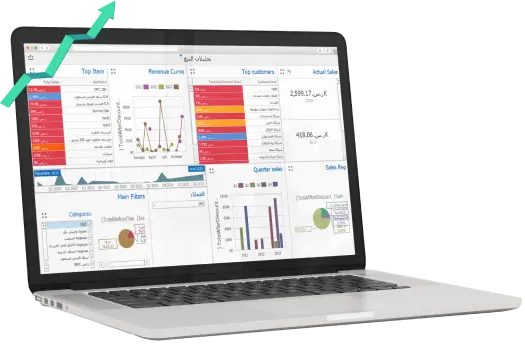When the company prepares the production budget for its fiscal period, each finished product must have what is called (BOM) or a bill of materials, any finished product is a group of basic materials and sub-raw materials and each material has a relative weight in the composition of the product, meaning we have a product XXX involves in its manufacture a group of raw materials.
Material A, which is 45% of the unit of the product, and Material B is 25%, and Material C is 30% and so on until the total weight of the raw materials is equal to 100%.
Of course, there are finished products whose unit of measurement in tons, for example, and therefore the basic materials and sub-raw materials in kilograms, for example in the heavy industry
If the finished product in the kilogram, for example, so the basic materials are in the gram, and so on, it's important to know the unit of measurement for the finished product and the basic materials and sub-raw materials, if any
Objectives of the Direct Materials Budget
1- It estimates the amount of raw materials needed for the company so that the company can provide them, and this helps the production departments to have the necessary quantities for production and the necessary specifications to help them implement Production Planning at the scheduled dates.
2- It estimates the amount of inventory that must be held in each of the raw materials at the end of the budget period monthly, quarterly, semi-annually or annually according to the situation and estimates the amount of inventory that must be available at the beginning of the period and prevents the inventory accumulation.
3- Providing the procurement department with adequate data through which it can prepare the direct material purchases budget in the sense that the purchases budget is associated with the direct materials budget.
The role of the production department in preparing the direct materials budget
The production department is responsible for determining the raw materials that each finished product needs, the types of raw materials required, and the auxiliary materials, and a bill of materials is created for each product of the finished products that include the raw materials used in it, the standard quantity of each material and the wastage percentage
The production department is responsible for determining the standard rate for each quantity of raw materials used, as well as the loss and damage rate that is determined according to various reasons such as the nature of the raw materials, the skill level of workers and the conditions of production and consumption to the production equipment and its effect on the quantity of production and on the basis of information a bill of materials is created for each product and the amount of raw materials used and other materials auxiliary
The standard rate used in the standard costing system must be a mix between the industrial rate in the company and the industry average to maintain a certain level of costs
Preparing the Direct Materials Budget
The budget is prepared for each product separately, according to the period and the different materials for each product, so that the budget shows the planned quantity of raw materials for each product and in each period
It is classified according to products and raw materials distributed over four periods that are comprised of them the budget, and there are monthly sub-budgets associated with the budget of the quarter
For example, in the first quarter, the company targets to produce 100 tons, and this figure is from the production budget in the same period
We select the needs of each ton of steel of each raw material i.e. one ton of steel what is needed from each raw material (1000 * raw material percentage)
This figure (1000) means 1000 kg equals 1 ton
Generally
Direct Material in Units Needed for Production
= Budgeted Production during the Period (production budget) * Units of Direct Material Required per Unit
For example, a ton of steel consists of materials
A and its percentage in the composition of the product is 45% so one ton of this material requires 450 kg
B and its percentage in the composition of the product is 35% so one ton of this material requires 350 kg
C and its percentage in the composition of the product is 30% so one ton of this material requires 300 kg
To produce 100 tons
Material A needs = 100 * 450 = 45,000 kg
Material B needs = 100 * 350 = 35000kg
Material C needs = 100 * 300 = 30,000 kg
And so on in any product and in any unit of measurement for the finished product and units of measurement of raw materials
And then, the spoilage rate to each material is calculated, and this spoilage is very normal in any industry depending on the type of material or the industry itself or the efficiency of the workers
It is considered as an important part of production requirements by taking into consideration what determines the company's needs of the raw materials
The spoilage rate is estimated by the production department; the amount of spoilage in each material is calculated and added to the product raw material requirements
The third step
Calculating Inventory Carrying Cost (%)
For the company to produce in the quarter or period, the raw materials inventory must be available to purchase and supply from the suppliers, and therefore it must holding inventory in the warehouse and the inventory carrying cost varies from one raw material to another according to its nature
For example, the company may be of 20%, meaning that the company at the end of each quarter or monthly, it must have a raw material balance of 20% of the production needs of the second quarter
Assuming the second quarter, the company will produce 200 tons, and we will select these 200 tons what need of raw materials as much as we explained, and it must be that at the end of the first quarter the company inventory carrying cost equal 20% of the production needs of the second quarter
So, to calculate the direct material in units that is needed for production
= Budgeted Beginning Direct Material in Units
+ Direct Material in Units Needed for Production
+ Normal Spoilage
− Budgeted Ending Direct Material in Units (a percentage of product raw material requirements for the next period)










